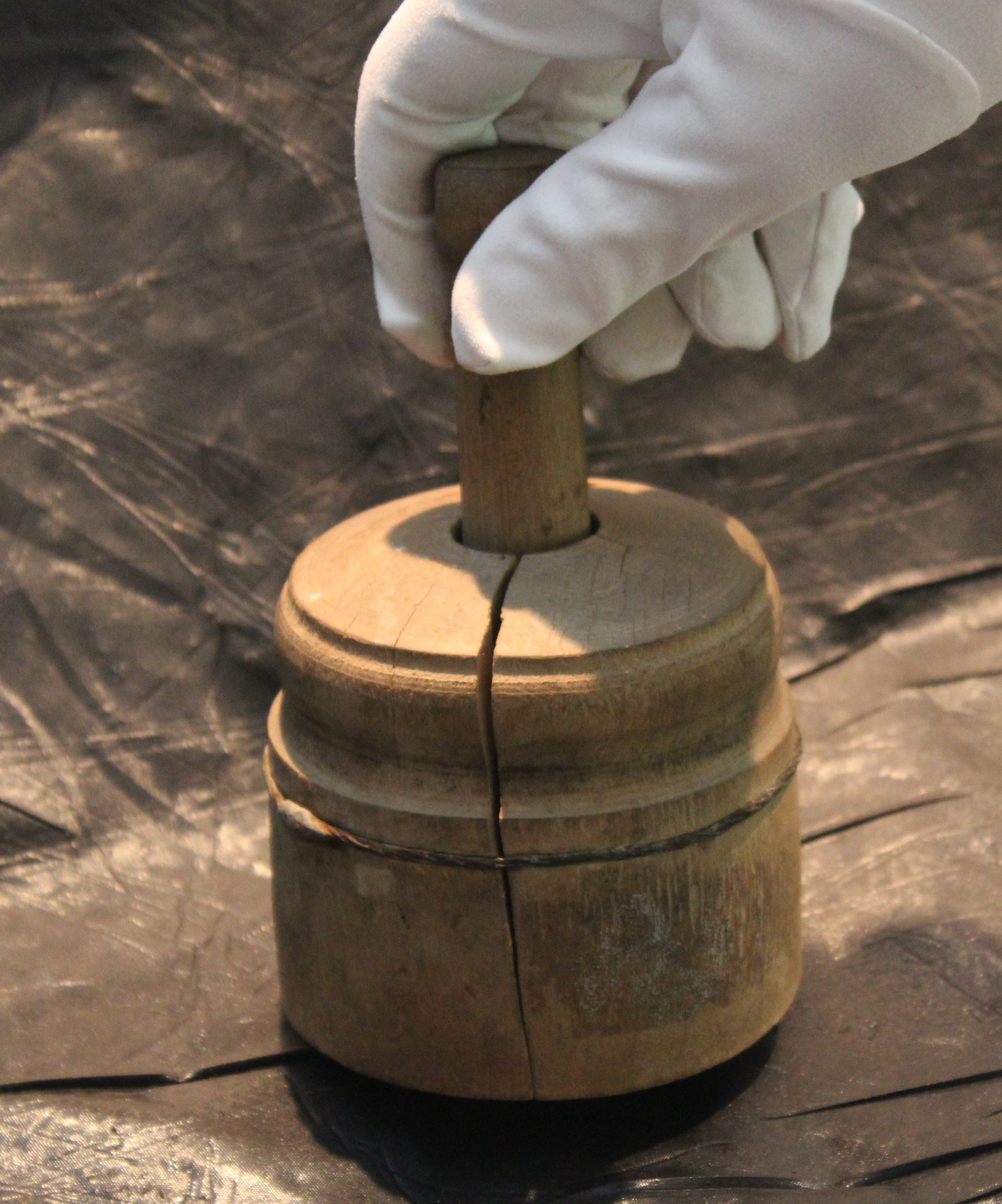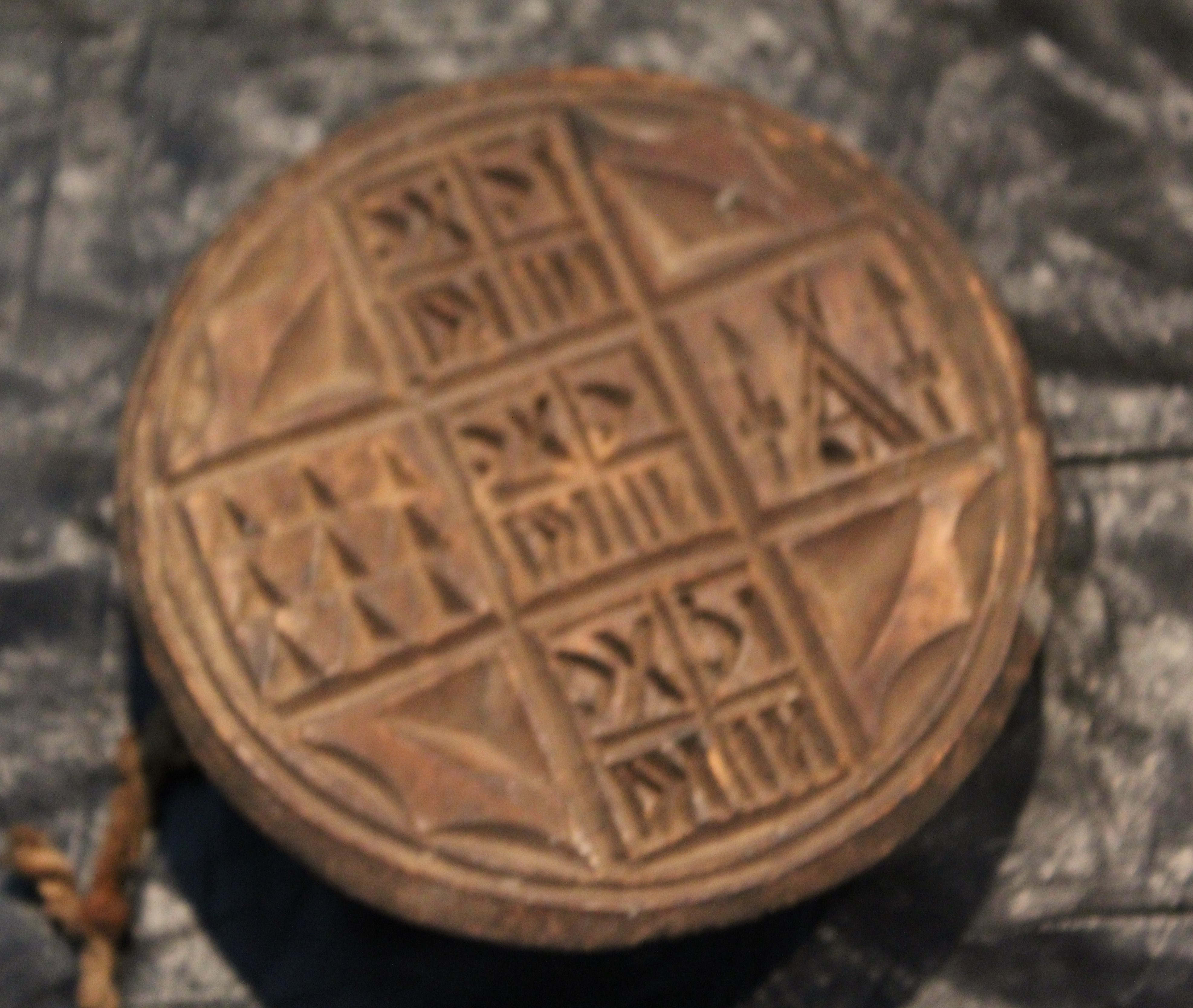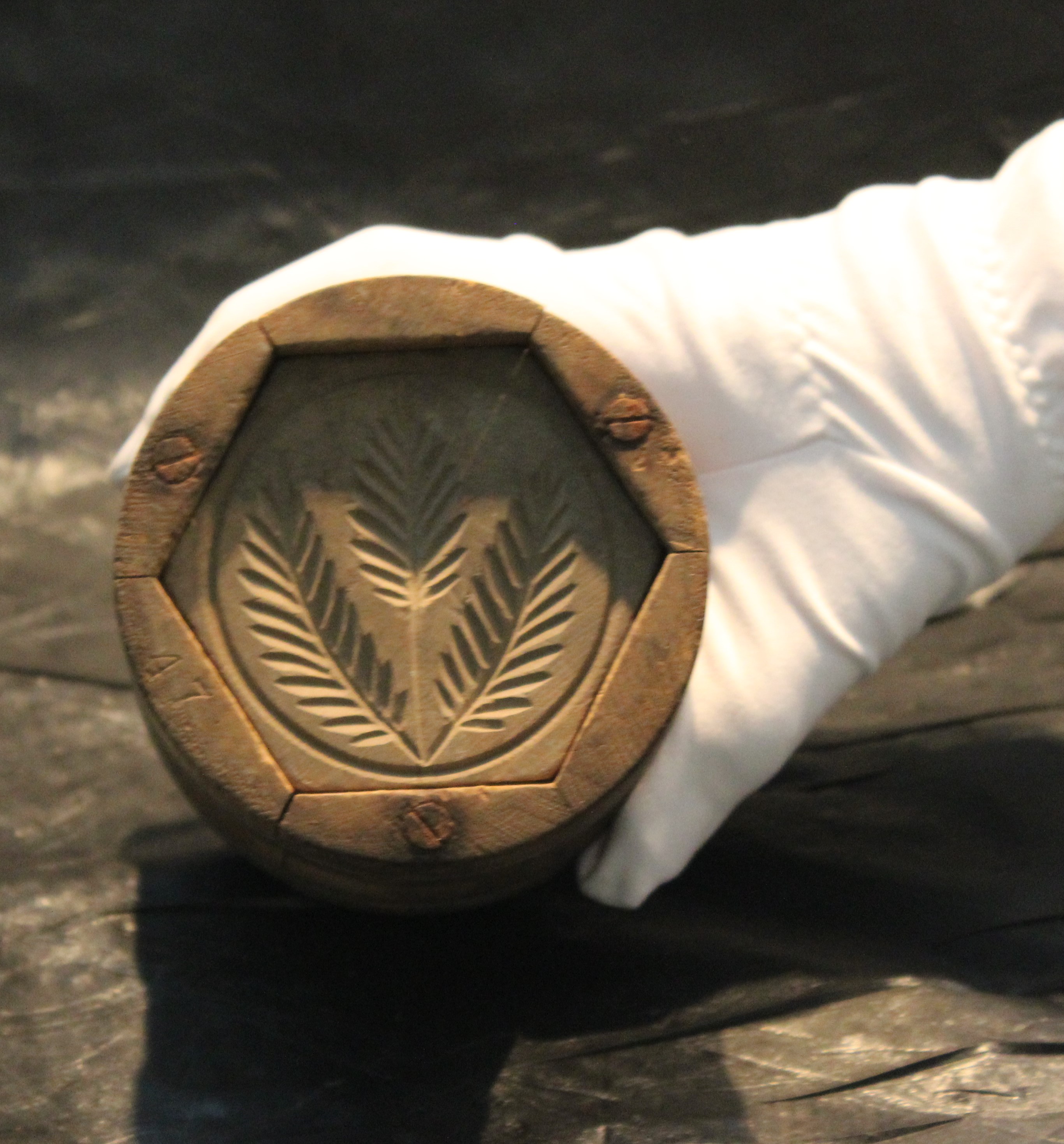Historic Tools of North Castle
Butter Molds/Press (4)
These devices at Smith’s Tavern are wooden butter molds and butter presses. 18th and 19th-century dairy farmers were expressing their creativity through creamery. Butter molds, usually carved from wood, were a way for farmers to add panache to their product while also offering their customers a way to identify it, especially important as dairy began to be sold at the market and not directly from the farm.
Many wooden molds were shaped like bells that were spacious enough to hold a pound of butter. The stamp itself was a carved insert that would occupy the top of the inner space and was attached to a handle. After the cream was churned and washed (washing butter gets rid of leftover whey and helps butter keep longer), it would be ready for molding. Once packed into the cavity, the butter pressed against the top would take on the impression of the stamp’s etching. The handle could then be used as a plunger to push the stamped butter out, its curved top revealing the carved design.
There are four butter molds or presses at Smith's Tavern:
Catalog Items:
Item T220
| Location: | Right Shelves - 2nd |
|---|---|
| Length: | 10 cm |
| Width: | 10 cm |
| Height: | 15 cm |
| Weight: | 340 g |
The first device (T220) is a large circular butter mold with a decorative pattern.
Item T222
| Location: | Right Shelves - 2nd |
|---|---|
| Length: | 9 cm |
| Width: | 9 cm |
| Height: | 13 cm |
| Weight: | 210 g |
The second device (T222) is a small circular butter press with a pattern of trees and a leaf.
Item T223
| Location: | Right Shelves - 2nd |
|---|---|
| Length: | 12 cm |
| Width: | 12 cm |
| Height: | 5 cm |
| Weight: | 80 g |
The third device (T223) is a circular butter press with an Indian geometric pattern.
Item T224
| Location: | Right Shelves - 2nd |
|---|---|
| Length: | 10 cm |
| Width: | 10 cm |
| Height: | 12 cm |
| Weight: | 411 g |
The fourth device (T224) is a circular butter mold but with a hexagonal design and a three leaf pattern.






